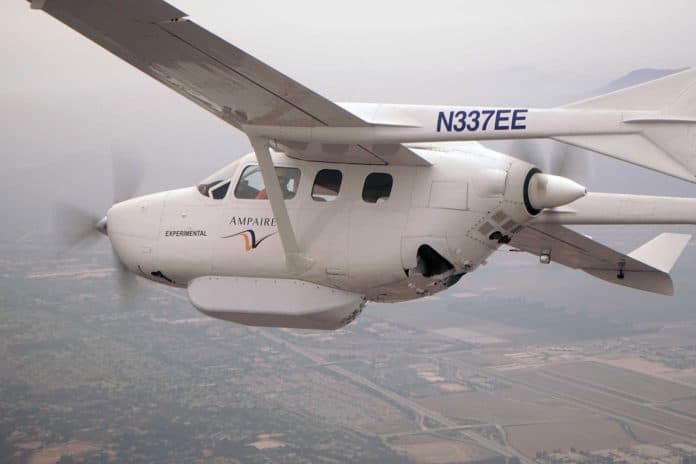The Californian technology startup Ampaire has flown an updated version of its Cessna 337 ‘Electric EEL’ hybrid-electric aircraft conversion. It took off from California’s Camarillo airport, climbed to 3,000 feet, and the flight lasted 35 minutes.
During the flight, the test pilot checked the operation of the engines, the functioning of the electrical system, and the temperature of the units. All checks were found to be successful.
The company intends to conduct several test flights using the aircraft, which it refers to as “Hawaii Bird,” before shipping the 337 to Hawaii in October. There it will be tested further in partnership with Hawaiian regional carrier Mokulele Airlines and will complete several demonstration flights.
The modernized Cessna 337, which made its first flight, received an improved transmission and a more powerful electric motor that rotates the propeller. In addition, on the plane, the developers replaced the instrument panel and added indicators for the operation of the internal combustion engine and control of the electrical system.
Ampaire’s 337 conversion program involves replacing one of the six-seat aircraft’s two-piston engines with an electric propulsion system. The Hawaii Bird is powered by a conventional 310-horsepower Continental IO-550 combustion engine with a power of 231 kilowatts in the tail, while a 200kW-capable electric motor in the nose is limited in this application to 120 kW.
The aircraft’s battery pack has been relocated from inside the cabin to the underside of the fuselage and enclosed in a composite aerodynamically-optimized shell. This frees up room in the cabin for flight test engineers, test equipment, and observers.
Once commercial operations are launched, Ampaire estimates that the direct operating costs of Hawaii Birds are lower than those of conventional Cessna 337s and that emissions during flight operations can be reduced by between 40 and 50%. In the hybrid version, the engine-motor combination gives the second demonstrator the ability to cruise for 75 minutes at 120kts (224km/h). The plane can also fly another 30 minutes on a backup battery.
